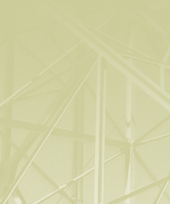EE 350 Radioscience Seminar
Professor Howard Zebker
Autumn 2003-2004
Date: Wednesday, November 19, 2003
Time: 4:15 PM – Refreshments at 4:00
Location: Bldg.
TC SEQ, Room 101
|
An Airborne L-band SAR for Repeat
Pass Deformation Measurements
Dr. Scott Hensley
NASA Jet Propulsion LaboratoryAbstract
Repeat pass radar interferometric measurements from spaceborne
SARs such as ERS, JERS and Radarsat have become standard
measurements for understanding geophysical processes associated
with volcanoes, earthquakes and ice sheet dynamics. Satellite
repeat pass time intervals range from 24-44 days for presently
operational or planned to be operational systems and a
spaceborne SAR system designed specifically to meet the needs of
the solid earth science community had a proposed repeat pass
time interval of 8-10 days. For certain geophysical processes of
interest such as magma flow, post seismic rebound and some fast
moving glaciers these time intervals are too great to fully
resolve the geophysical processes of interest. As part of the
NASA Instrument Incubator Program we proposed an airborne SAR
suited to making rapid repeat radar interferometric measurements
to study such geophysical processes. NASA requested this
capability be hosted on the new class of unmanned aerial
vehicles (UAVs) or minimally piloted vehicles (MPV) to support
sustained observational intervals and reduce costs for
collecting airborne science data. This talk will discuss some of
the platform selection criteria and issues, aspects of the radar
design, some of the data processing issues unique to airborne
repeat pass processing for deformation measurements. |


